[Startup Hatch] ‘Build things that matter to you’ – Vaibhav Chhabra, The Maker’s Asylum
[This article is part of the YourStory series Startup Hatch, about incubators, accelerators and makerspaces in the startup ecosystem. See earlier profiles of initiatives at IIT Bombay, IIM Bangalore, BITS Pilani, NCL, Tata Elxsi, Axilor, NID, IIIT-Bangalore, IIIT-Hyderabad, Vellore Institute of Technology, PSG Coimbatore and Workbench Projects.]
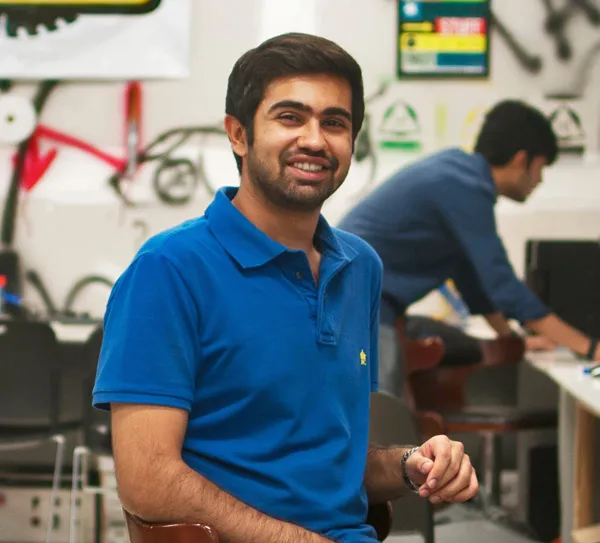
Vaibhav Chhabra is a mechanical engineer by profession but a carpenter by passion. A graduate from Boston University, Vaibhav spent two years of his career at EyeNetra, building eye diagnostic devices. He then moved to Mumbai and co-founded The Maker’s Asylum with Anool Mahidharia; it is now recognised as a FabLab. Vaibhav is also an instructor at MIT REDX, MIT Media Lab’s health-tech lab in India. He enjoys making furniture, machines, and winning at ping pong in his spare time.
Vaibhav joins us in this interview on the vision, challenges, opportunities, and roadmap ahead for the Maker’s Asylum, along with tips and insights for startups.
YS: What was the founding vision of Maker’s Asylum, and how is it supported?
MA: Maker’s Asylum is a lot like a playground for artists, thinkers, and engineers. We call them our community of 'unlike' minded people. Our vision has always been of a collaborative workspace with an access to a range of tools, ideas, and people.
Over time, we have equipped our space with simple hand and power tools as well as rapid prototyping devices and digital fabrication machines like 3D printers, laser cutters, and CNC mills.
We have a strong community of trainers and mentors who share their skills through regular workshops, tool training, and meetups on topics like design thinking, wood working, CAD modelling, architecture, and rapid prototyping. The Maker’s Asylum is essentially bootstrapped, but also has membership fees, sponsored projects through the ‘Maker-in-Residence’ programme, and the goodwill of sponsors.
YS: What’s a typical day or weekend like in your makerspace? What kind of membership profile do you have at the moment?
MA: There isn’t really a typical day. It could go from heads-down concentrated silence to very spirited meetup. The communities at both our Mumbai and Delhi spaces are working on several projects ranging from healthcare and social innovation to artistic installations and toys.
Weekends are busier with several events sometimes happening simultaneously. Electronics and circuitry design could be happening at the same time as drone making and woodworking.
Our members range from students in high school making their debut as tinkerers to hexagenarians with decades of experience. But most of our members are generally those working on collaborative projects. We have a balanced male to female ratio, and the women and girls are the biggest supporters of woodworking at the Asylum. Artists, doctors, architects, musicians, designers, bankers, social scientists, and engineers, all fit into the Asylum member profile.
YS: How have you helped participants move from hobbyist to maker to entrepreneur? Any examples or projects you can give here?
MA: The Maker’s Asylum has had the good fortune to help a number of hobbyists along their journey.
- Vinay R., an optometrist, is now indulging his hobby of making eye-wear frames from recycled wood. He’s called it ‘BlockOne by Vinay R.’
- Viren, originally a software engineer, was a hobbyist wood worker but now is an instructor, which also allows him to enhance his own skills.
- Two architects, Seeja Sudhakaran and Khushbu Davda, with a penchant for geometry in design and parametric design approach, got a first-hand feel of equipments at the Asylum. This helped create their own design studio called Emergence.in.
- Khyati learnt how to use tech on leather. Having started out with hand painted designs, she is now laser engraving art for her handcrafted customised leather products retailed under TheBlackCanvas.in. The Asylum has been instrumental in bringing about more collaboration and even more exposure. Thirty per cent of the new product line has happened at the Asylum.
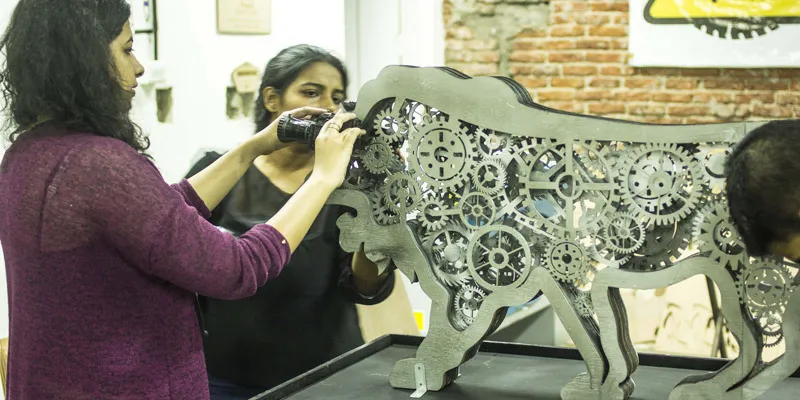
YS: What is the profile of the managers of your makerspace?
MA: The team at Maker’s Asylum comes from diverse educational backgrounds and has interdisciplinary skill sets and interests. Everyone comes in with an open mind and a willingness to facilitate projects. Our team managers include mechanical, electronics, and automobile engineers and an industrial and interactions designer. We have a well-balanced representation of both technology and design.
We also have a Maker-in-Residence programme for individuals who work on their own projects while also helping manage some aspects of the Asylum.
YS: What activities and support do you provide for social entrepreneurs and NGOs?
MA: We host regular meetups on topics ranging from developing social solutions to crowdfunding. These provide a great platform for social entrepreneurs to network, get inspired and act on their ideas. In addition, we work closely with a lot of social entrepreneurs in their efforts at combating challenges in literacy.
We’ve also partnered with relevant NGOs in Mumbai and Delhi to run innovation workshops in slum pockets. The results were pipe lamps built by the kids who attended. We also helped ‘Ugly Indians’ in Bandra make more effective cleaning tools.
We work with NGOs in providing access to their communities for free at the Asylum as part of the fellowship programme, so that they may explore their latent talents and interests.
YS: What would you say are the top three opportunities for Indian entrepreneurs in hardware/product space, and in the media/creative space?
MA: India being the biggest consumer market makes us the best place to be designers, makers, and the like. Everyone is talking about user-centered design and India is the place to make the products and solutions. India is moving away from being an outsourcing hub to actually leading the process with innovative ideation and design-led thinking.
Given the recent push for turning India into a manufacturing powerhouse, the timing is perfect for entrepreneurs in the hardware space to act upon their ideas. Our top three picks here are: cheaper healthcare diagnostic devices; productisation of our jugaad; and smarter solutions feeding into smart cities.
In the media, creative, and arts space, the timing is perfect to move out of comfort zones and explore cross-disciplinary processes and activities. Engaging with artists and technologists has never been easier thanks to the widespread proliferation of the Internet, both on traditional computing devices as well as mobile.
Our top three picks here are: tech meets fashion; better audio-video capture for more immersive experience; and interactive design.
YS: How closely are you working with educational institutes, and what can be done to get them more interested and involved?
MA: Not as closely as we would like to. We are working with individual students but not institutes as of now. That is likely to change this year. Students come in to participate in our workshops and to meet people from other disciplines. We have had numerous projects that originated at an educational institute but were built at the Asylum. These include a prototype Formula SAE car, healthcare devices, and a humanoid robot.
Academics have a unique place in the Asylum. Not only are they encouraged to benefit from the space and equipment to facilitate their students and personal projects, but we also encourage them to mentor the community at the Asylum.
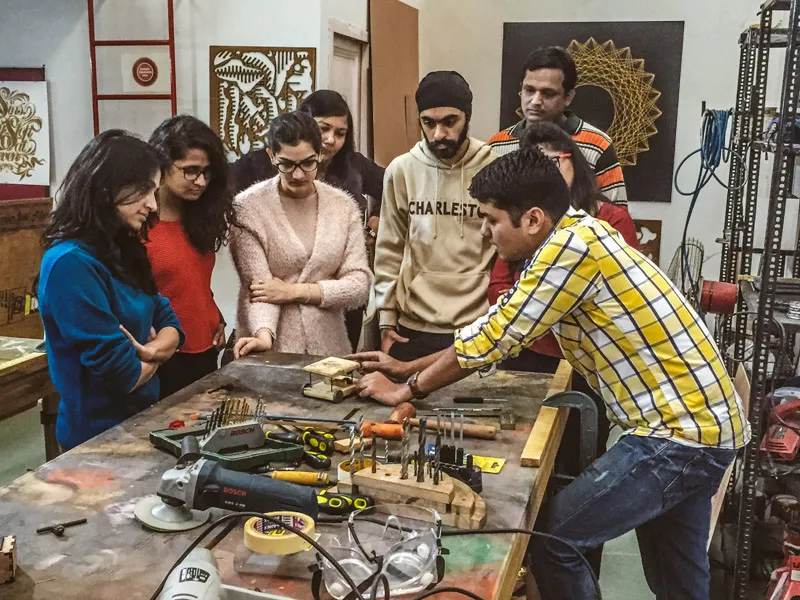
YS: What are some ways in which large corporates and tech providers can get involved with makerspaces?
MA: While we have had the involvements of corporate, the scope is just beginning to diversify. We conduct workshops for corporate teams and run projects on behalf of corporate. We are also supported by OEMs and tech providers in the form of sponsored equipment.
We would like to build more meaningful associations with corporates through being a bridge between their needs and the talent that is available across the community. The Asylum would like to co-create curriculum through industry-academia partnerships. We would also like industry to think of makerspaces as a test bed for new ideas.
YS: What are the top three trends in the maker movement today?
MA: The maker movement though in its infancy in India is moving from the basics of tool access to creating projects around IoT not only for home and office automation, but also those that can fit in with the Smart Cities concept.
Communities are now looking at solving niche problems through collaborations in an environment without limitations, and with access to the tools and knowledge that maker spaces provide. The costs of rapid prototyping machines have decreased and other machines are more accessible – this gives impetus to the maker movement.
The maker movement is also seeing people with specialised skills take centre stage in running projects, organising special interest meetups, and so on.
YS: What are the most common misconceptions that people have about makerspaces?
MA: People wanting to join a makerspace often tell us that they are not techies and have no tool experience. From this we understand where they are coming from. Others see it either a place for hipsters or like-minded nerds who talk Arduino, Instructables and Raspberry Pi! The more worrying problem is that sometimes we are looked at as a place to get your projects outsourced to without being involved in any aspect of it.
We’re lucky to have a diverse community, so people walking in at once are at ease. But yes, it could look a little tech focussed most of the time with so many tools around. And then of course, if you walked in during our screen printing, cheese making and experimental music sessions, it would look more like a co-working space than a makerspace.
YS: What are the key challenges faced by makerspaces in India, and how can they be overcome?
MA: Given that all the makerspaces in India have just started, being sustainable and having a growth model are the two biggest challenges. It is no secret that running a makerspace is an expensive proposition with relatively low financial incentives. To overcome this, we have been looking into avenues of working closely with both the industry and the government so that access is not restricted by finances alone.
Our educational system in the country follows a linear progression. Bringing in the interdisciplinary nature of makerspaces is something we are working towards.
YS: What kinds of IP are being created by your makers? What assistance can they get in this regard?
MA: Makerspaces and the Asylum are mostly focussed on learning and hence encourage open source projects. But over the last year, we have been connecting makers to IP specialists who can make them aware of what route to take, open or patented.
We have had makers at the Asylum create IP out of projects in the healthcare and medical spaces.
YS: How would you differentiate your makerspace from the others in the field?
MA: All the makerspaces in India are at a nascent stage and we are all in the process of differentiating ourselves. We are nearly all generic – a space with basic tools providing access and a place to experiment. Maybe in a couple of years we would be able to see clear lines of differentiation.
YS: What would you define as success for your makerspace?
MA: By the happiness quotient and the nature of the engagements we have with our community and team!
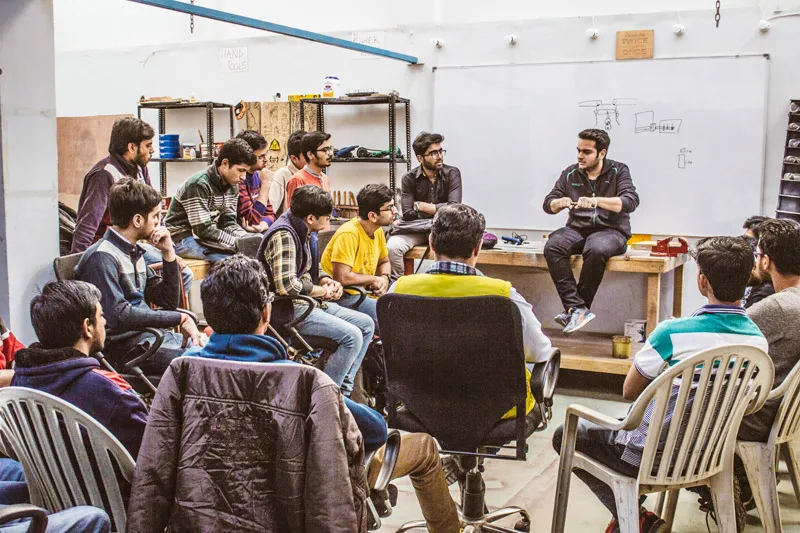
YS: How do you compare and contrast India’s makerspaces with that of other countries like US and China?
MA: India is a land of jugaad and that needs to be the strength of our makerspaces in India. In the US, it is a DIY hobby centre but here it is a place to solve problems. We have bigger problems to solve in India and hence opening a place like this comes with higher aspirations, compared to the US.
China on the other hand is taking advantage of its manufacturing background and creating productisation studios and accelerators to rapidly accelerate tinkers to manufacturers.
YS: What are your recommendations for Indian policymakers to make business easier for makerspaces and startups in India? How would you connect to initiatives like Make in India, Startup India, and Skill India?
MA: Our government has already taken its first steps towards promoting startups with the launch of Startup India, Standup India and so on. It will take the same thinking toward makerspaces that will make business easier. And if one could see the potential in makerspaces being the innovation and incubation hub for Make in India, then the movement will gain traction rapidly.
YS: How are you collaborating with other makerspaces in India, and in other parts of the world?
MA: It is too early for strong defined foreign collaborations, but we hope to get there soon. In India, we collaborate with other makerspaces over talent and technology sharing. We encourage our makers to explore other makerspaces and vice versa.
We also share technology freely amongst ourselves as we believe innovation happens quicker when people are not necessarily holding on to their tradecraft. The Open Source movement is a great example of this very form of innovation.
We also partner with other makerspaces for events in an effort to maximise awareness about the growing maker movement in the country.
YS: What support would you give those who want to set up makerspaces in their own cities?
MA: We have an open discussion forum on our website where we help people with issues they are facing. We will readily take people through the steps to set up their own space.
We will also assist them in listing the tools required, building a community, setting up space requirements like safety, training, and the like.
YS: What are your recommendations to the startups and entrepreneurs in our audience?
MA: Build things that matter to you and have a sense of purpose. But at the same time do not allow creativity and fun stuff to die down!






![[Startup Hatch] ‘Build things that matter to you’ – Vaibhav Chhabra, The Maker’s Asylum](https://images.yourstory.com/cs/wordpress/2016/04/MA1.jpg?mode=crop&crop=faces&ar=2:1?width=3840&q=75)
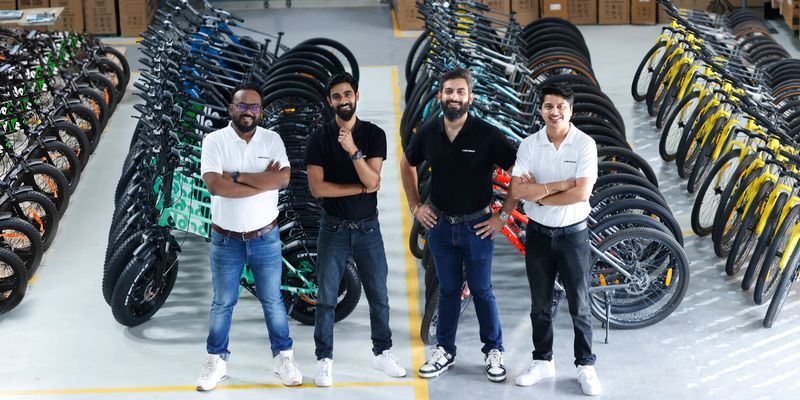

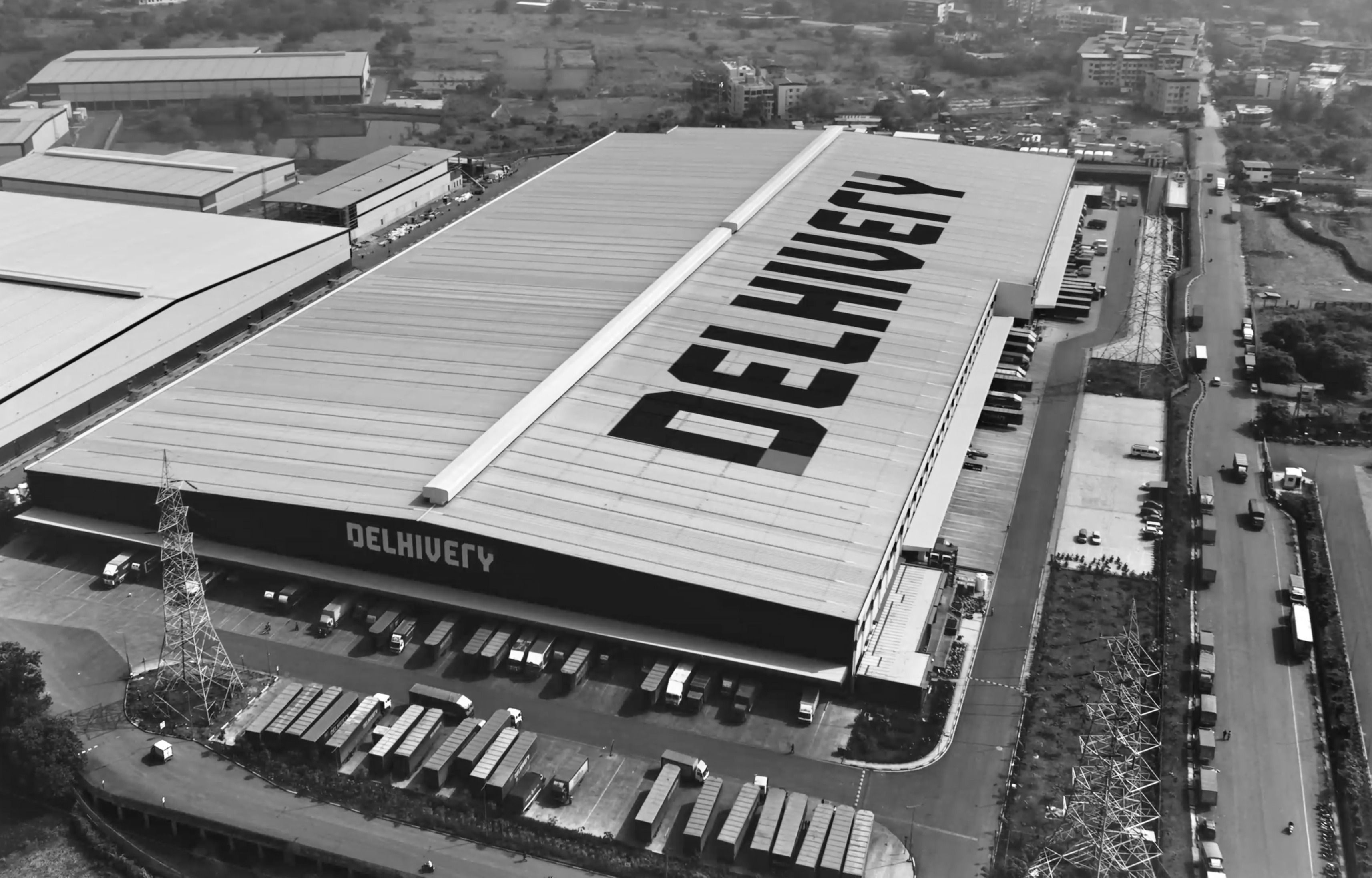
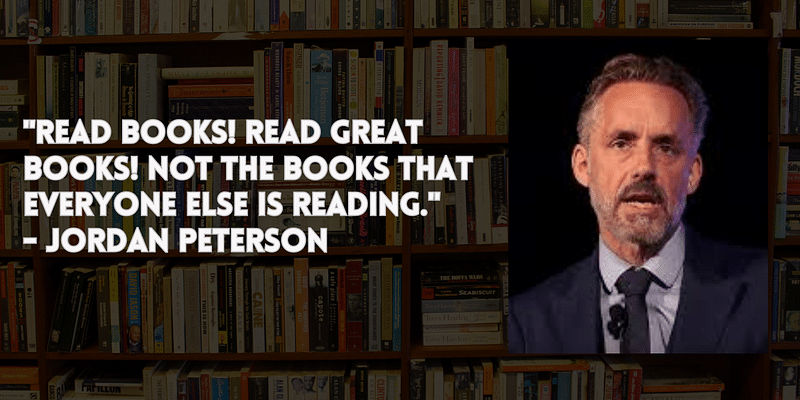
![[Funding alert] Procurement startup Procol raises $1M from Blume Ventures, Rainmatter Capital](https://images.yourstory.com/cs/2/79900dd0-d913-11e8-a160-45a90309d734/Procol_Team1563342174946.JPG)